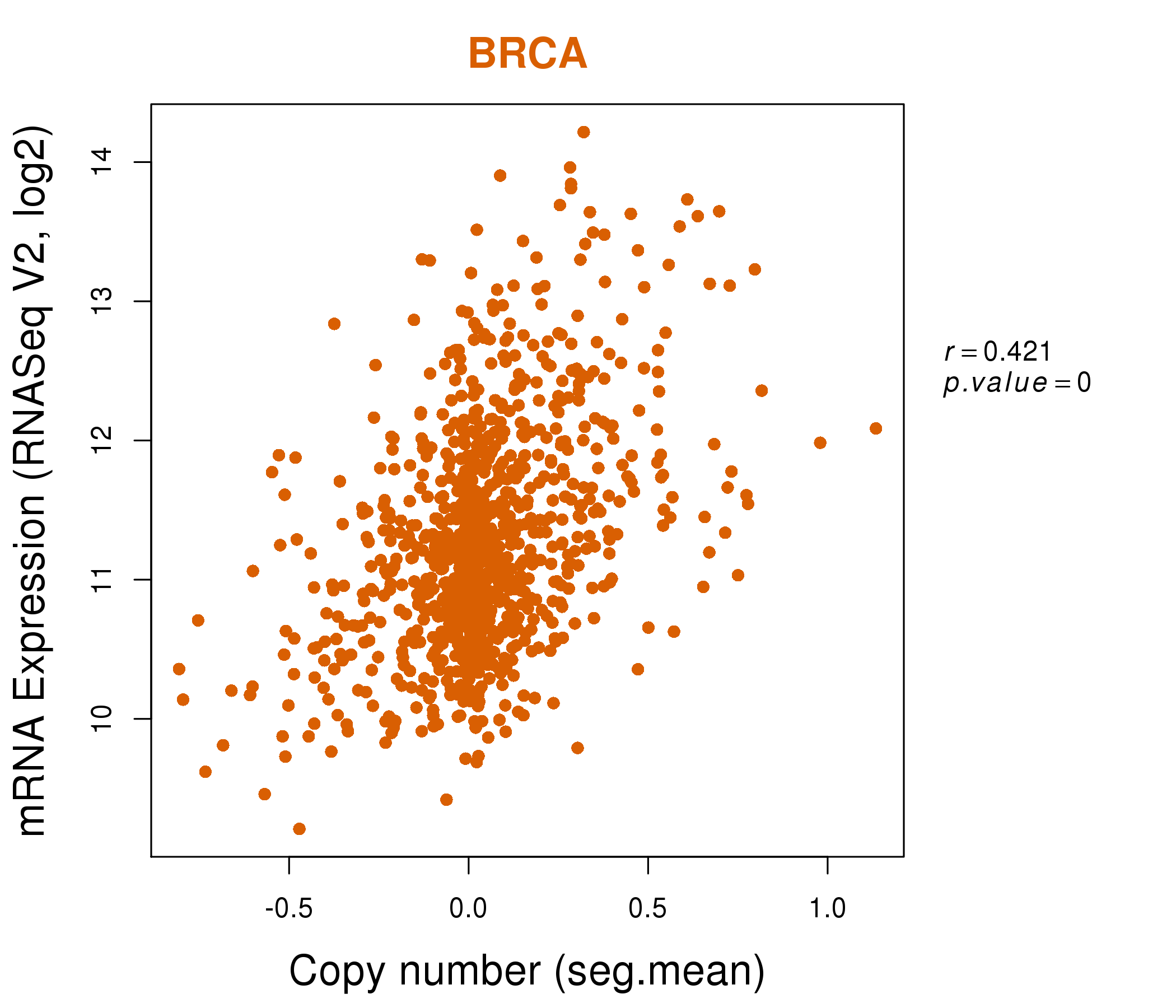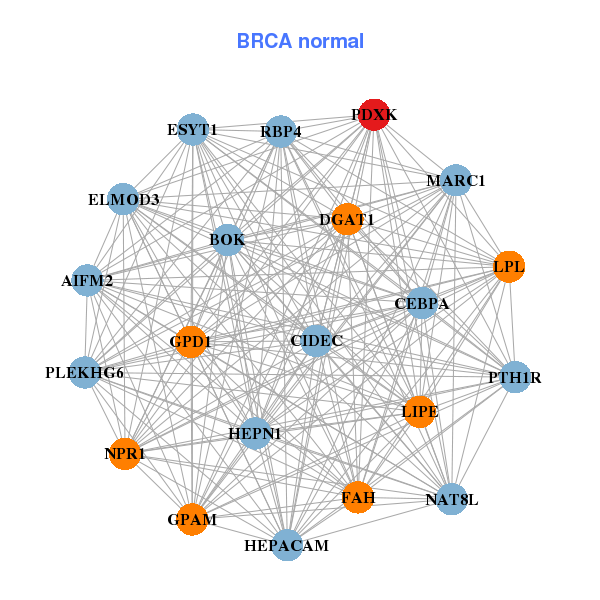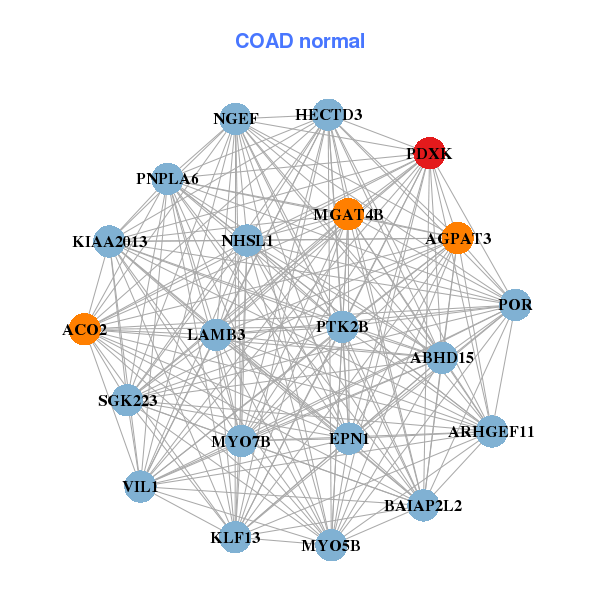|
|||||||||||||||||||||||||||||||||||||||||||||||||||||||||||||||||||||||||||||||||||||||||||||||||||||||||||||||||||||||||||||||||||||||||||||||||||||||||||||||||||||||||||||||||||||||||||||||||||||||||||||||||||||||||||||||||||||||||||||||||||||||||||||||||||||||||||||||||||||||||||||||||||||||||||||||||||||||||||||||||||||||||||||||||||||||||||||||||||||||||||
| |
| Phenotypic Information (metabolism pathway, cancer, disease, phenome) |
| |
| |
| Gene-Gene Network Information: Co-Expression Network, Interacting Genes & KEGG |
| |
|
| Gene Summary for PDXK |
| Basic gene info. | Gene symbol | PDXK |
| Gene name | pyridoxal (pyridoxine, vitamin B6) kinase | |
| Synonyms | C21orf124|C21orf97|HEL-S-1a|PKH|PNK | |
| Cytomap | UCSC genome browser: 21q22.3 | |
| Genomic location | chr21 :45138977-45182188 | |
| Type of gene | protein-coding | |
| RefGenes | NM_003681.4, NM_021941.1, | |
| Ensembl id | ENSG00000160209 | |
| Description | epididymis secretory sperm binding protein Li 1apyridoxal kinasepyridoxamine kinasepyridoxine kinasevitamin B6 kinase | |
| Modification date | 20141207 | |
| dbXrefs | MIM : 179020 | |
| HGNC : HGNC | ||
| Ensembl : ENSG00000160209 | ||
| HPRD : 01526 | ||
| Vega : OTTHUMG00000086870 | ||
| Protein | UniProt: go to UniProt's Cross Reference DB Table | |
| Expression | CleanEX: HS_PDXK | |
| BioGPS: 8566 | ||
| Gene Expression Atlas: ENSG00000160209 | ||
| The Human Protein Atlas: ENSG00000160209 | ||
| Pathway | NCI Pathway Interaction Database: PDXK | |
| KEGG: PDXK | ||
| REACTOME: PDXK | ||
| ConsensusPathDB | ||
| Pathway Commons: PDXK | ||
| Metabolism | MetaCyc: PDXK | |
| HUMANCyc: PDXK | ||
| Regulation | Ensembl's Regulation: ENSG00000160209 | |
| miRBase: chr21 :45,138,977-45,182,188 | ||
| TargetScan: NM_003681 | ||
| cisRED: ENSG00000160209 | ||
| Context | iHOP: PDXK | |
| cancer metabolism search in PubMed: PDXK | ||
| UCL Cancer Institute: PDXK | ||
| Assigned class in ccmGDB | C | |
| Top |
| Phenotypic Information for PDXK(metabolism pathway, cancer, disease, phenome) |
| Cancer | CGAP: PDXK |
| Familial Cancer Database: PDXK | |
| * This gene is included in those cancer gene databases. |
|
|
|
|
|
| . | |||||||||||||||||||||||||||||||||||||||||||||||||||||||||||||||||||||||||||||||||||||||||||||||||||||||||||||||||||||||||||||||||||||||||||||||||||||||||||||||||||||||||||||||||||||||||||||||||||||||||||||||||||||||||||||||||||||||||||||||||||||||||||||||||||||||||||||||||||||||||||||||||||||||||||||||||||||||||||||||||||||||||||||||||||||||||||||||||||||
Oncogene 1 | Significant driver gene in | ||||||||||||||||||||||||||||||||||||||||||||||||||||||||||||||||||||||||||||||||||||||||||||||||||||||||||||||||||||||||||||||||||||||||||||||||||||||||||||||||||||||||||||||||||||||||||||||||||||||||||||||||||||||||||||||||||||||||||||||||||||||||||||||||||||||||||||||||||||||||||||||||||||||||||||||||||||||||||||||||||||||||||||||||||||||||||||||||||||||||||
| cf) number; DB name 1 Oncogene; http://nar.oxfordjournals.org/content/35/suppl_1/D721.long, 2 Tumor Suppressor gene; https://bioinfo.uth.edu/TSGene/, 3 Cancer Gene Census; http://www.nature.com/nrc/journal/v4/n3/abs/nrc1299.html, 4 CancerGenes; http://nar.oxfordjournals.org/content/35/suppl_1/D721.long, 5 Network of Cancer Gene; http://ncg.kcl.ac.uk/index.php, 1Therapeutic Vulnerabilities in Cancer; http://cbio.mskcc.org/cancergenomics/statius/ |
| REACTOME_METABOLISM_OF_VITAMINS_AND_COFACTORS | |
| OMIM | |
| Orphanet | |
| Disease | KEGG Disease: PDXK |
| MedGen: PDXK (Human Medical Genetics with Condition) | |
| ClinVar: PDXK | |
| Phenotype | MGI: PDXK (International Mouse Phenotyping Consortium) |
| PhenomicDB: PDXK | |
| Mutations for PDXK |
| * Under tables are showing count per each tissue to give us broad intuition about tissue specific mutation patterns.You can go to the detailed page for each mutation database's web site. |
| - Statistics for Tissue and Mutation type | Top |
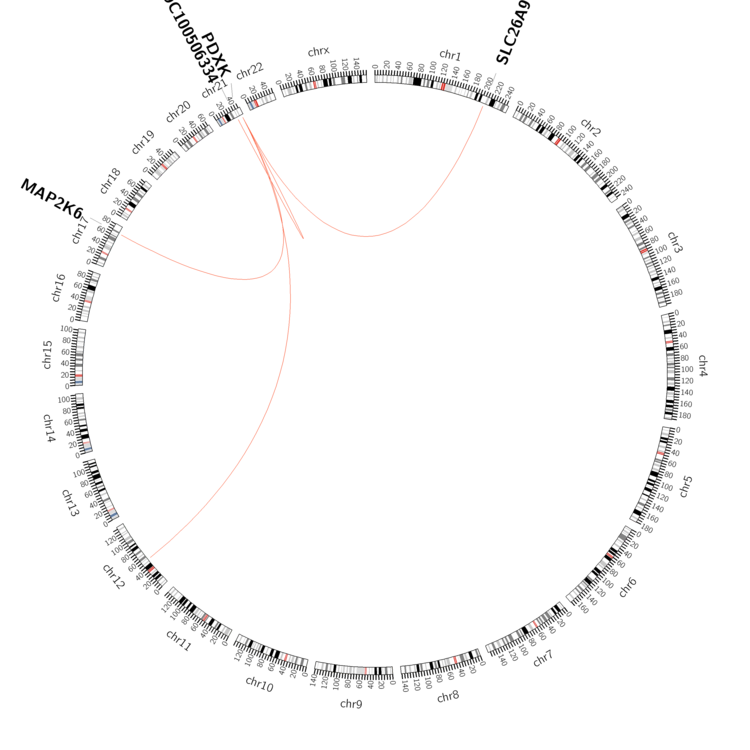 |
| - For Inter-chromosomal Variations |
| * Inter-chromosomal variantions includes 'interchromosomal amplicon to amplicon', 'interchromosomal amplicon to non-amplified dna', 'interchromosomal insertion', 'Interchromosomal unknown type'. |
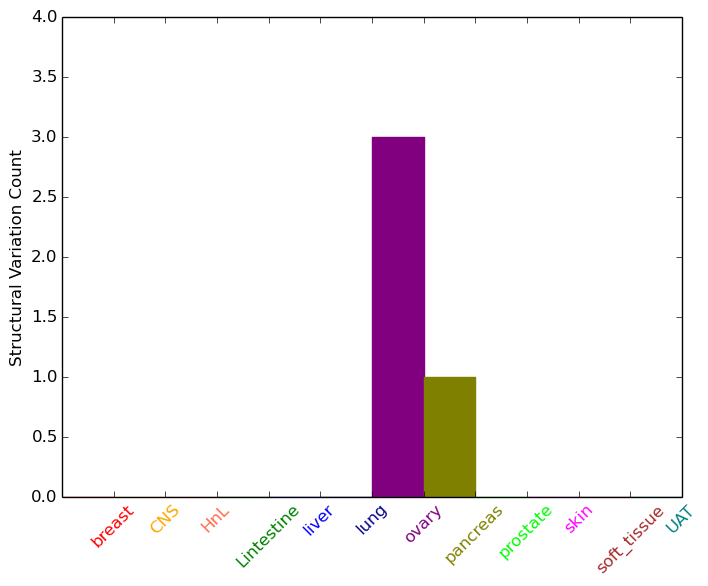 |
| - For Intra-chromosomal Variations |
| * Intra-chromosomal variantions includes 'intrachromosomal amplicon to amplicon', 'intrachromosomal amplicon to non-amplified dna', 'intrachromosomal deletion', 'intrachromosomal fold-back inversion', 'intrachromosomal inversion', 'intrachromosomal tandem duplication', 'Intrachromosomal unknown type', 'intrachromosomal with inverted orientation', 'intrachromosomal with non-inverted orientation'. |
 |
| Sample | Symbol_a | Chr_a | Start_a | End_a | Symbol_b | Chr_b | Start_b | End_b |
| ovary | PDXK | chr21 | 45144626 | 45144646 | SLC26A9 | chr1 | 205902519 | 205902539 |
| pancreas | PDXK | chr21 | 45141428 | 45141448 | LOC100506334 | chr21 | 35329454 | 35329474 |
| cf) Tissue number; Tissue name (1;Breast, 2;Central_nervous_system, 3;Haematopoietic_and_lymphoid_tissue, 4;Large_intestine, 5;Liver, 6;Lung, 7;Ovary, 8;Pancreas, 9;Prostate, 10;Skin, 11;Soft_tissue, 12;Upper_aerodigestive_tract) |
| * From mRNA Sanger sequences, Chitars2.0 arranged chimeric transcripts. This table shows PDXK related fusion information. |
| ID | Head Gene | Tail Gene | Accession | Gene_a | qStart_a | qEnd_a | Chromosome_a | tStart_a | tEnd_a | Gene_a | qStart_a | qEnd_a | Chromosome_a | tStart_a | tEnd_a |
| L25496 | C21orf2 | 25 | 247 | 21 | 45749348 | 45749570 | PDXK | 237 | 380 | 21 | 45157177 | 45157322 | |
| BF916410 | PDXK | 1 | 67 | 21 | 45179830 | 45179896 | RAD9A | 62 | 360 | 11 | 67165211 | 67165509 | |
| DA620160 | LOC100507412 | 3 | 153 | ? | 112029 | 112179 | PDXK | 151 | 256 | 21 | 45179047 | 45179152 | |
| Top |
| Mutation type/ Tissue ID | brca | cns | cerv | endome | haematopo | kidn | Lintest | liver | lung | ns | ovary | pancre | prost | skin | stoma | thyro | urina | |||
| Total # sample | 1 | 1 | 1 | |||||||||||||||||
| GAIN (# sample) | 1 | 1 | 1 | |||||||||||||||||
| LOSS (# sample) |
| cf) Tissue ID; Tissue type (1; Breast, 2; Central_nervous_system, 3; Cervix, 4; Endometrium, 5; Haematopoietic_and_lymphoid_tissue, 6; Kidney, 7; Large_intestine, 8; Liver, 9; Lung, 10; NS, 11; Ovary, 12; Pancreas, 13; Prostate, 14; Skin, 15; Stomach, 16; Thyroid, 17; Urinary_tract) |
| Top |
|
 |
| Top |
| Stat. for Non-Synonymous SNVs (# total SNVs=7) | (# total SNVs=7) |
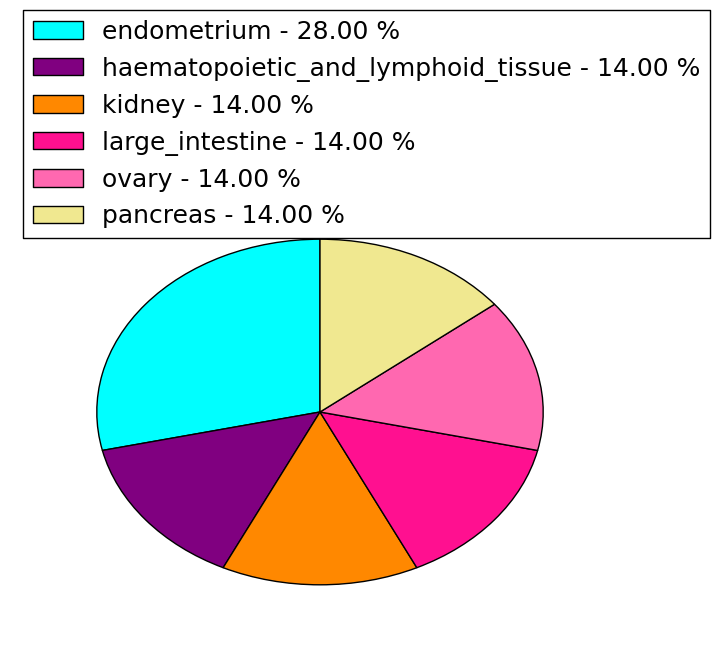 | 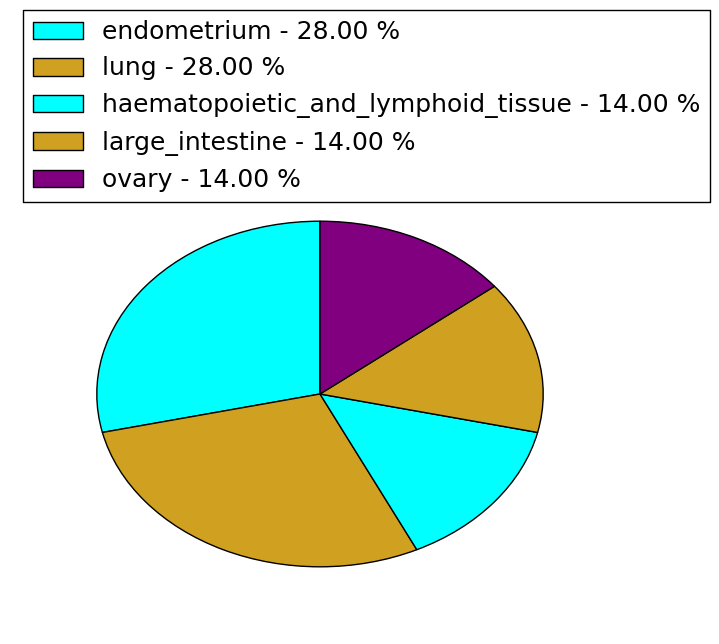 |
(# total SNVs=1) | (# total SNVs=0) |
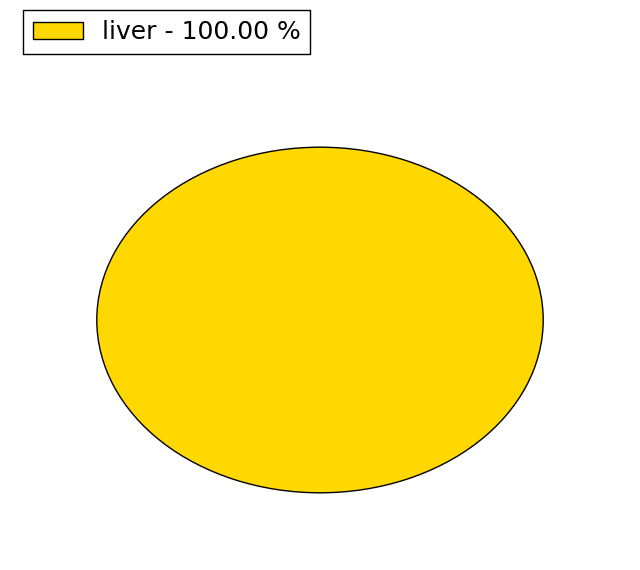 |
| Top |
| * When you move the cursor on each content, you can see more deailed mutation information on the Tooltip. Those are primary_site,primary_histology,mutation(aa),pubmedID. |
| GRCh37 position | Mutation(aa) | Unique sampleID count |
| chr21:45165994-45165994 | p.G122G | 2 |
| chr21:45173479-45173479 | p.S213F | 2 |
| chr21:45165995-45165995 | p.E123K | 1 |
| chr21:45173500-45173500 | p.R220Q | 1 |
| chr21:45168884-45168884 | p.P129P | 1 |
| chr21:45173526-45173526 | p.V229I | 1 |
| chr21:45168938-45168938 | p.I147I | 1 |
| chr21:45173564-45173564 | p.L241L | 1 |
| chr21:45153948-45153948 | p.? | 1 |
| chr21:45168941-45168941 | p.T148T | 1 |
| Top |
|
 |
| Point Mutation/ Tissue ID | 1 | 2 | 3 | 4 | 5 | 6 | 7 | 8 | 9 | 10 | 11 | 12 | 13 | 14 | 15 | 16 | 17 | 18 | 19 | 20 |
| # sample | 2 | 2 | 2 | 1 | 2 | 4 | 5 | |||||||||||||
| # mutation | 2 | 2 | 2 | 1 | 2 | 4 | 4 | |||||||||||||
| nonsynonymous SNV | 1 | 1 | 2 | 3 | ||||||||||||||||
| synonymous SNV | 2 | 1 | 2 | 2 | 2 | 1 |
| cf) Tissue ID; Tissue type (1; BLCA[Bladder Urothelial Carcinoma], 2; BRCA[Breast invasive carcinoma], 3; CESC[Cervical squamous cell carcinoma and endocervical adenocarcinoma], 4; COAD[Colon adenocarcinoma], 5; GBM[Glioblastoma multiforme], 6; Glioma Low Grade, 7; HNSC[Head and Neck squamous cell carcinoma], 8; KICH[Kidney Chromophobe], 9; KIRC[Kidney renal clear cell carcinoma], 10; KIRP[Kidney renal papillary cell carcinoma], 11; LAML[Acute Myeloid Leukemia], 12; LUAD[Lung adenocarcinoma], 13; LUSC[Lung squamous cell carcinoma], 14; OV[Ovarian serous cystadenocarcinoma ], 15; PAAD[Pancreatic adenocarcinoma], 16; PRAD[Prostate adenocarcinoma], 17; SKCM[Skin Cutaneous Melanoma], 18:STAD[Stomach adenocarcinoma], 19:THCA[Thyroid carcinoma], 20:UCEC[Uterine Corpus Endometrial Carcinoma]) |
| Top |
| * We represented just top 10 SNVs. When you move the cursor on each content, you can see more deailed mutation information on the Tooltip. Those are primary_site, primary_histology, mutation(aa), pubmedID. |
| Genomic Position | Mutation(aa) | Unique sampleID count |
| chr21:45165994 | p.G122G | 2 |
| chr21:45168941 | p.D181N | 1 |
| chr21:45175862 | p.P210P | 1 |
| chr21:45170384 | p.V229I | 1 |
| chr21:45170387 | p.L241L | 1 |
| chr21:45172429 | p.L252L | 1 |
| chr21:45161591 | p.T262A | 1 |
| chr21:45173471 | p.L62L | 1 |
| chr21:45161602 | p.V266I | 1 |
| chr21:45173526 | p.Y66C | 1 |
| * Copy number data were extracted from TCGA using R package TCGA-Assembler. The URLs of all public data files on TCGA DCC data server were gathered on Jan-05-2015. Function ProcessCNAData in TCGA-Assembler package was used to obtain gene-level copy number value which is calculated as the average copy number of the genomic region of a gene. |
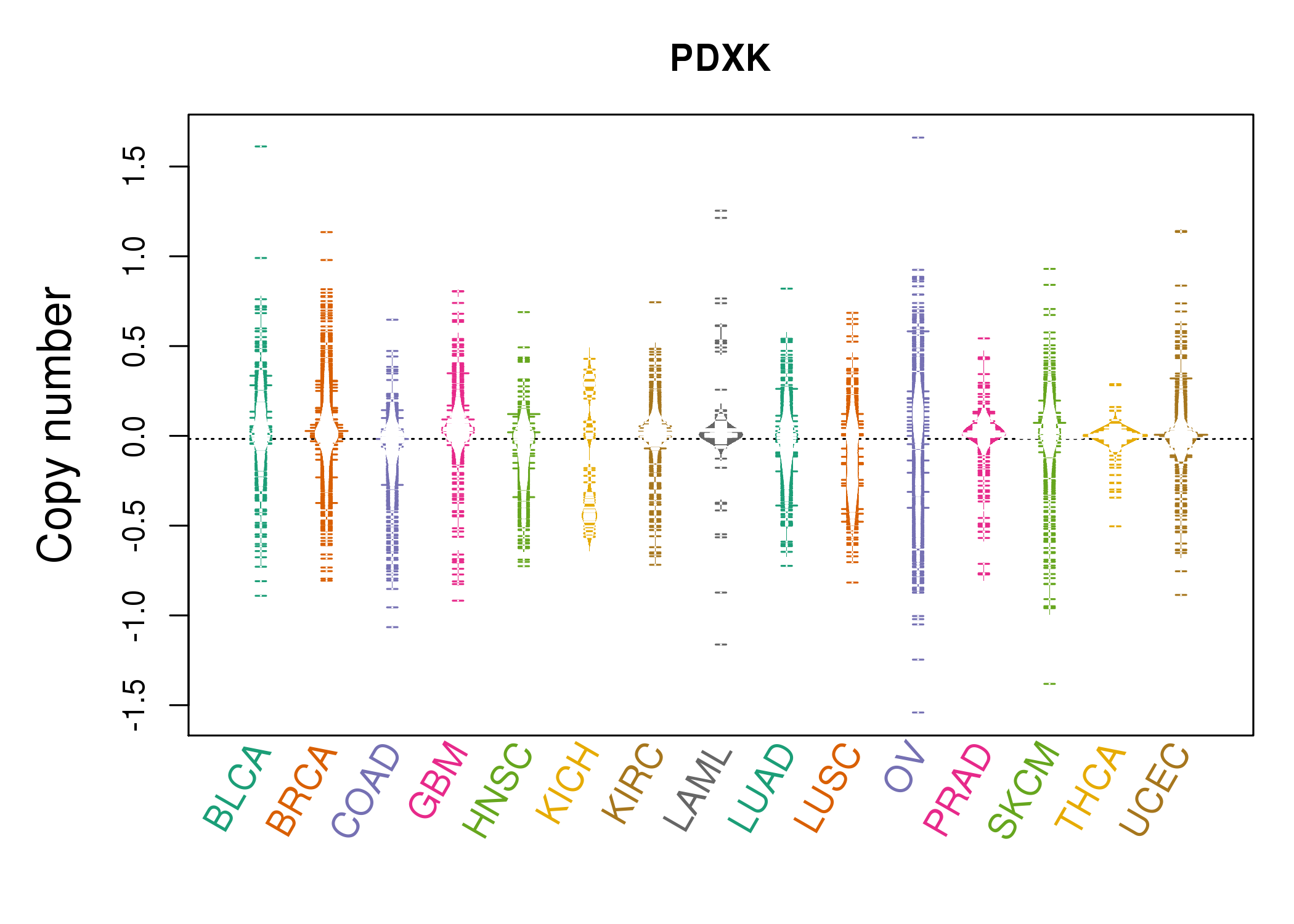 |
| cf) Tissue ID[Tissue type]: BLCA[Bladder Urothelial Carcinoma], BRCA[Breast invasive carcinoma], CESC[Cervical squamous cell carcinoma and endocervical adenocarcinoma], COAD[Colon adenocarcinoma], GBM[Glioblastoma multiforme], Glioma Low Grade, HNSC[Head and Neck squamous cell carcinoma], KICH[Kidney Chromophobe], KIRC[Kidney renal clear cell carcinoma], KIRP[Kidney renal papillary cell carcinoma], LAML[Acute Myeloid Leukemia], LUAD[Lung adenocarcinoma], LUSC[Lung squamous cell carcinoma], OV[Ovarian serous cystadenocarcinoma ], PAAD[Pancreatic adenocarcinoma], PRAD[Prostate adenocarcinoma], SKCM[Skin Cutaneous Melanoma], STAD[Stomach adenocarcinoma], THCA[Thyroid carcinoma], UCEC[Uterine Corpus Endometrial Carcinoma] |
| Top |
| Gene Expression for PDXK |
| * CCLE gene expression data were extracted from CCLE_Expression_Entrez_2012-10-18.res: Gene-centric RMA-normalized mRNA expression data. |
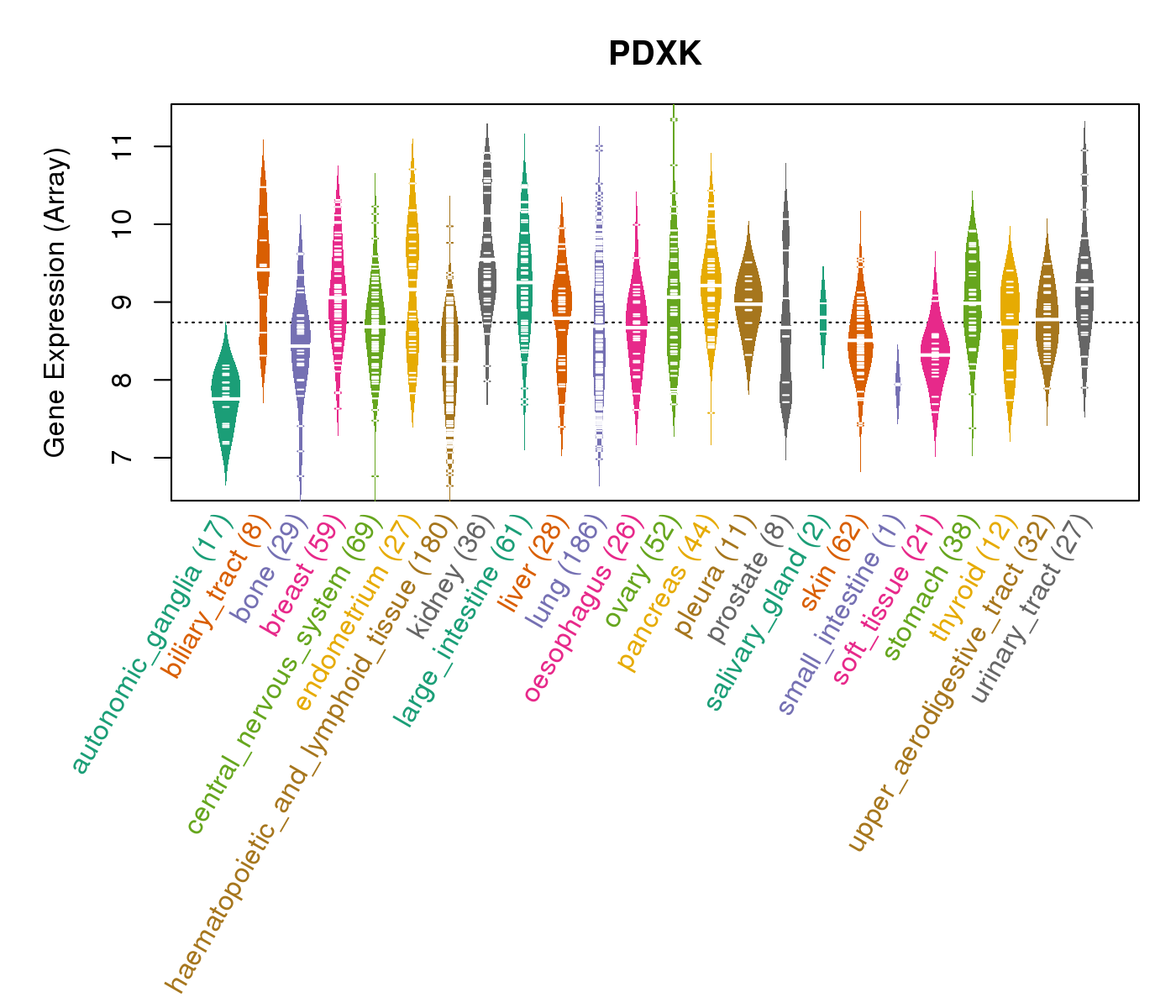 |
| * Normalized gene expression data of RNASeqV2 was extracted from TCGA using R package TCGA-Assembler. The URLs of all public data files on TCGA DCC data server were gathered at Jan-05-2015. Only eight cancer types have enough normal control samples for differential expression analysis. (t test, adjusted p<0.05 (using Benjamini-Hochberg FDR)) |
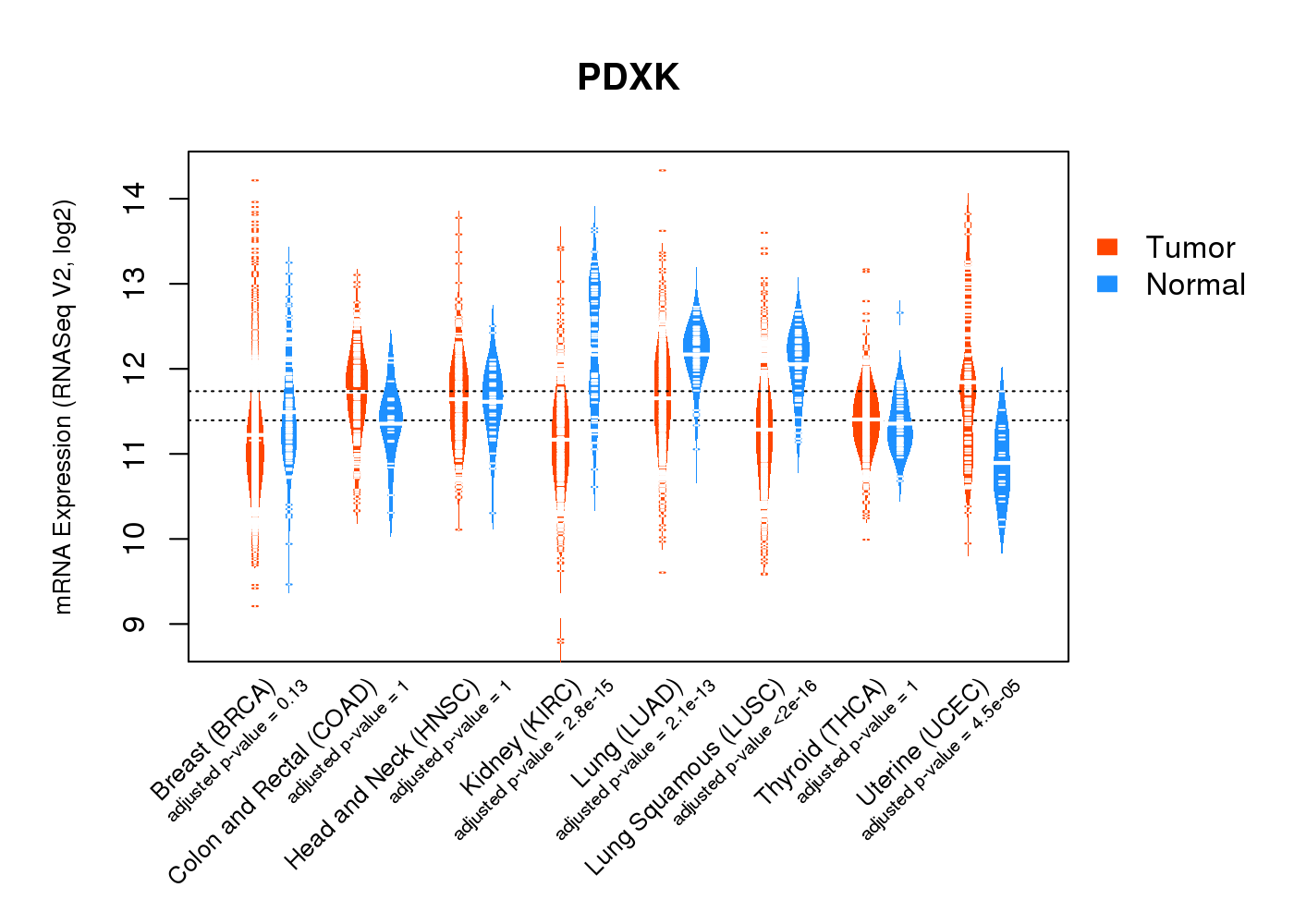 |
| Top |
| * This plots show the correlation between CNV and gene expression. |
: Open all plots for all cancer types
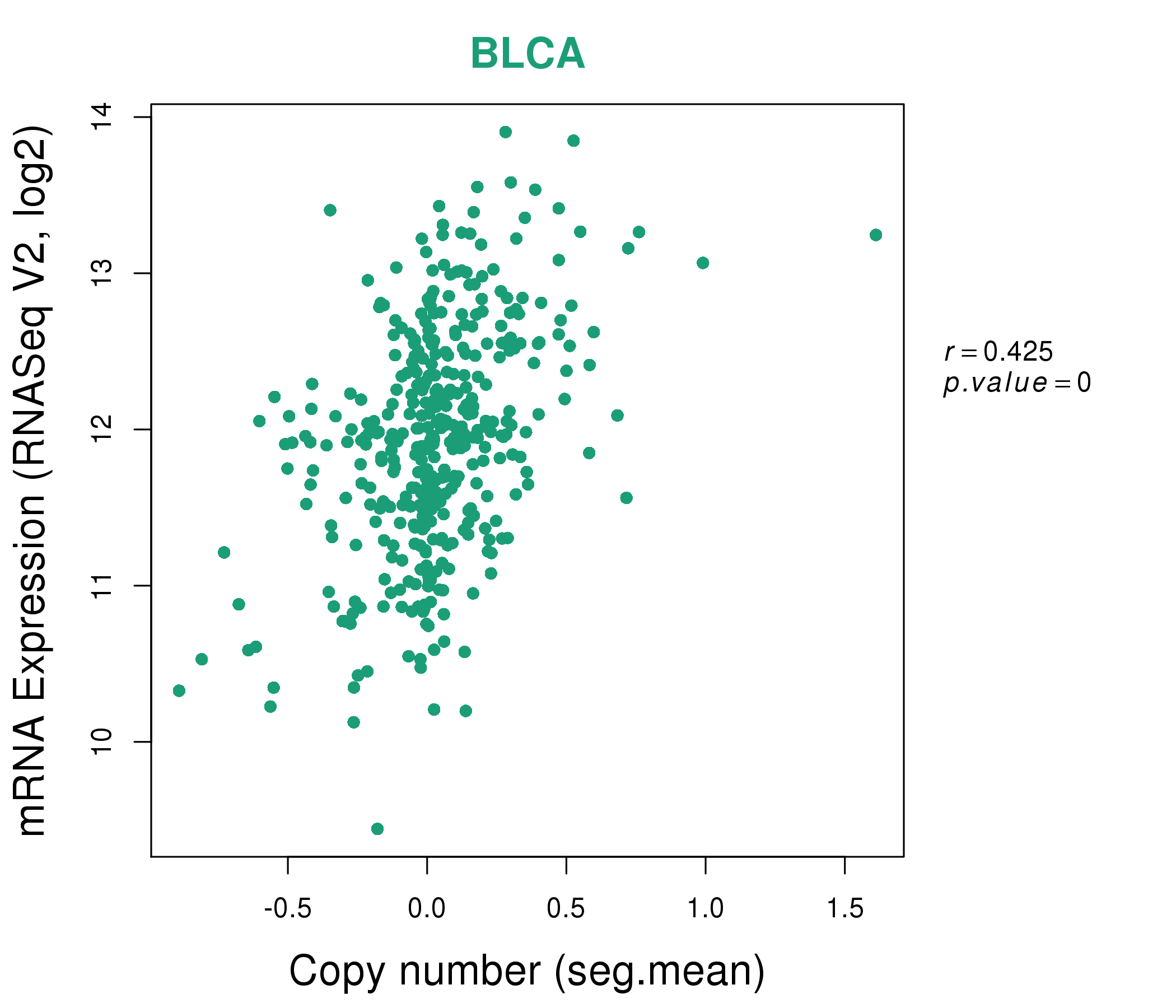 |
|
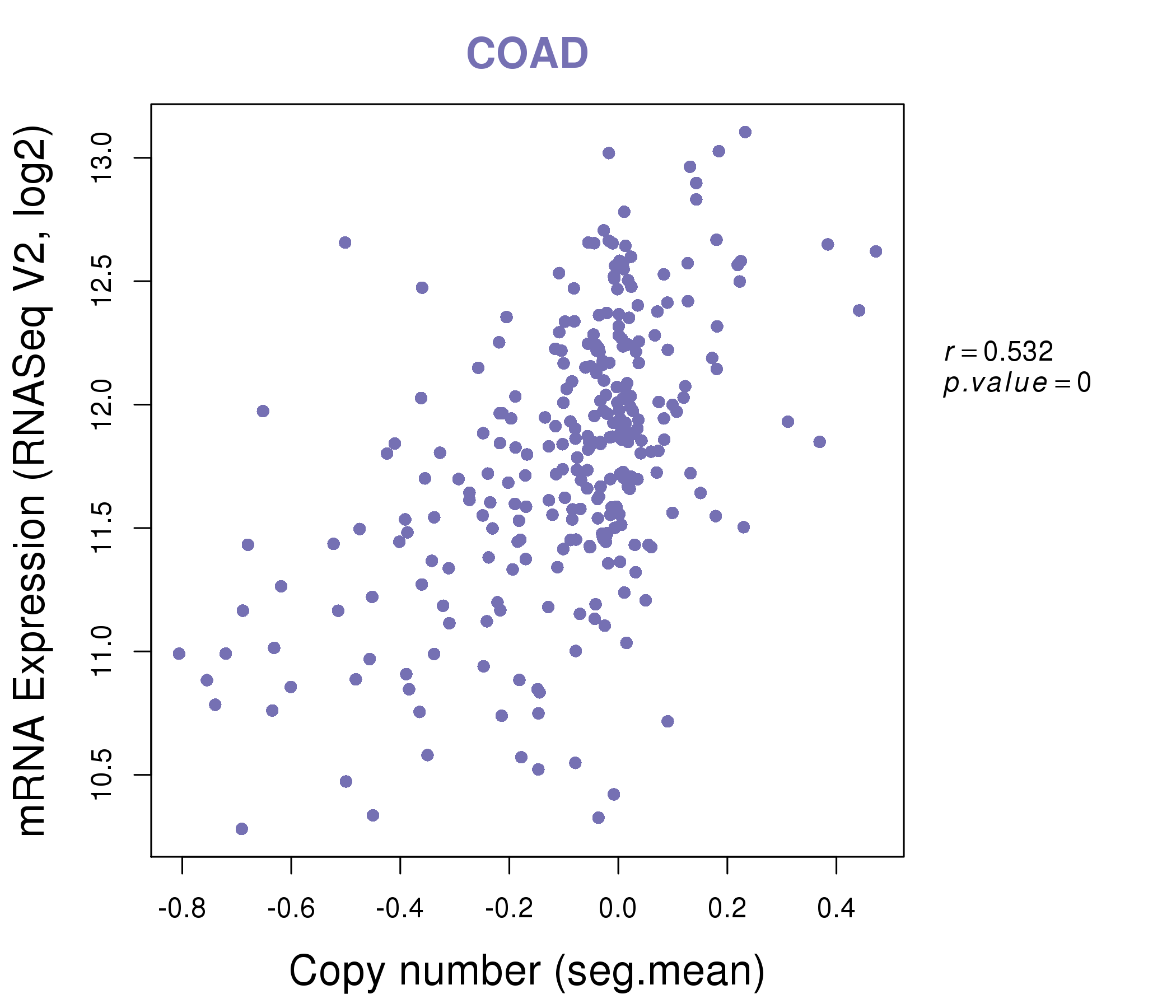 |
|
| Top |
| Gene-Gene Network Information |
| * Co-Expression network figures were drawn using R package igraph. Only the top 20 genes with the highest correlations were shown. Red circle: input gene, orange circle: cell metabolism gene, sky circle: other gene |
: Open all plots for all cancer types
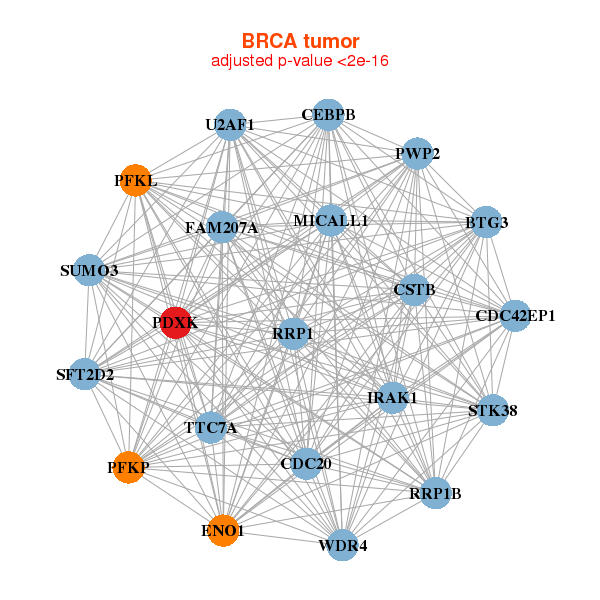 |
| ||||
| BTG3,FAM207A,CDC20,CDC42EP1,CEBPB,CSTB,ENO1, IRAK1,MICALL1,PDXK,PFKL,PFKP,PWP2,RRP1, RRP1B,SFT2D2,STK38,SUMO3,TTC7A,U2AF1,WDR4 | AIFM2,BOK,CEBPA,CIDEC,DGAT1,ELMOD3,ESYT1, FAH,GPAM,GPD1,HEPACAM,HEPN1,LIPE,LPL, MARC1,NAT8L,NPR1,PDXK,PLEKHG6,PTH1R,RBP4 | ||||
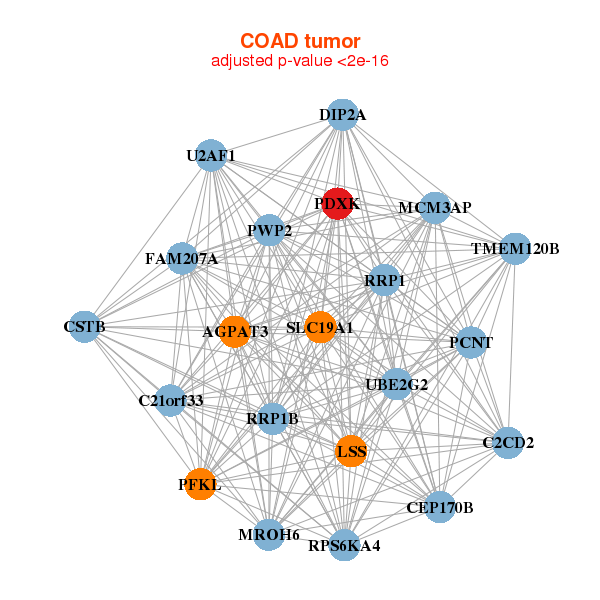 |
| ||||
| AGPAT3,C21orf33,FAM207A,C2CD2,MROH6,CSTB,DIP2A, CEP170B,LSS,MCM3AP,PCNT,PDXK,PFKL,PWP2, RPS6KA4,RRP1,RRP1B,SLC19A1,TMEM120B,U2AF1,UBE2G2 | ABHD15,ACO2,AGPAT3,ARHGEF11,BAIAP2L2,EPN1,HECTD3, KIAA2013,KLF13,LAMB3,MGAT4B,MYO5B,MYO7B,NGEF, NHSL1,PDXK,PNPLA6,POR,PTK2B,SGK223,VIL1 |
| * Co-Expression network figures were drawn using R package igraph. Only the top 20 genes with the highest correlations were shown. Red circle: input gene, orange circle: cell metabolism gene, sky circle: other gene |
: Open all plots for all cancer types
| Top |
: Open all interacting genes' information including KEGG pathway for all interacting genes from DAVID
| Top |
| Pharmacological Information for PDXK |
| DB Category | DB Name | DB's ID and Url link |
| * Gene Centered Interaction Network. |
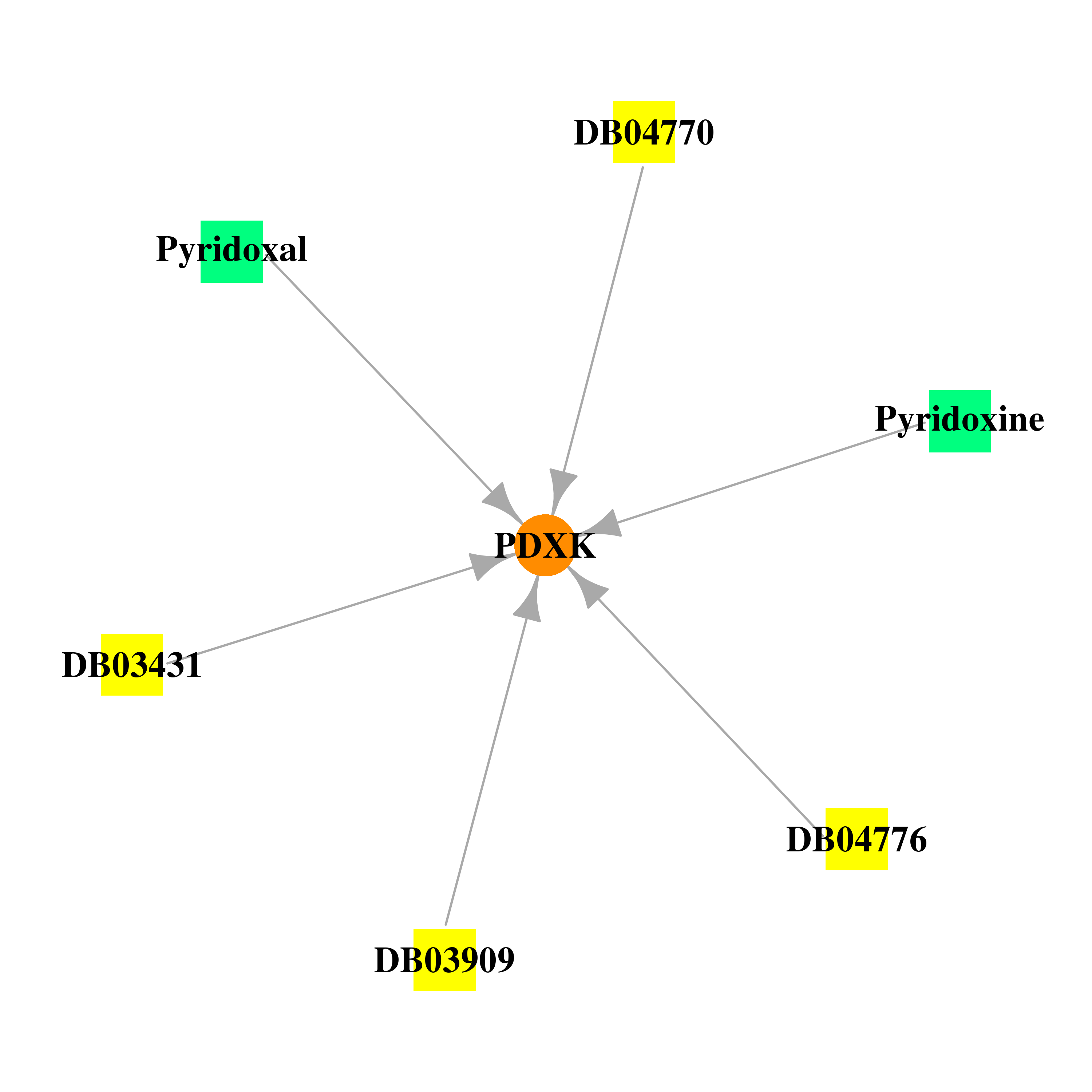 |
| * Drug Centered Interaction Network. |
| DrugBank ID | Target Name | Drug Groups | Generic Name | Drug Centered Network | Drug Structure |
| DB00147 | pyridoxal (pyridoxine, vitamin B6) kinase | approved; nutraceutical | Pyridoxal |  |  |
| DB00165 | pyridoxal (pyridoxine, vitamin B6) kinase | approved; nutraceutical | Pyridoxine | 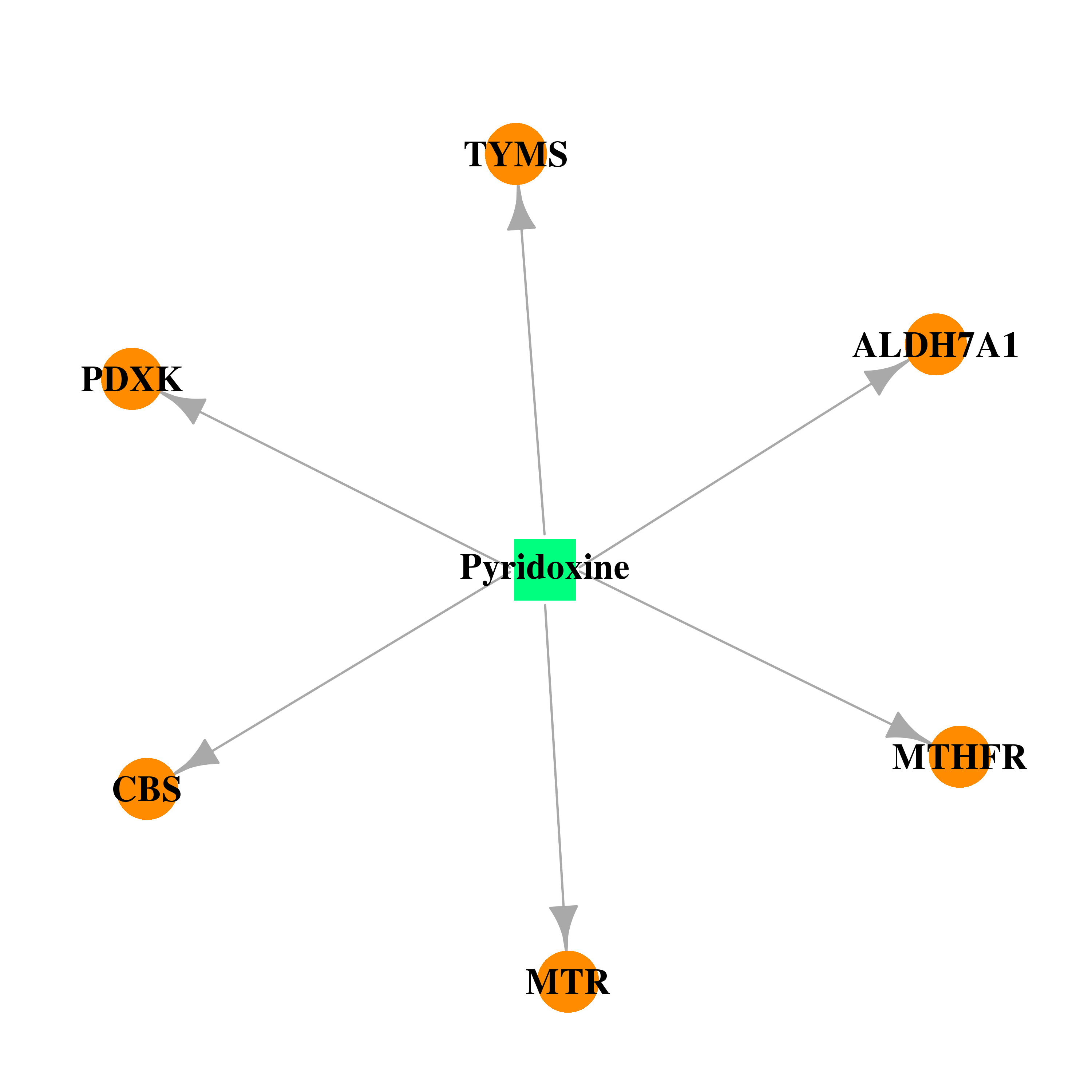 | 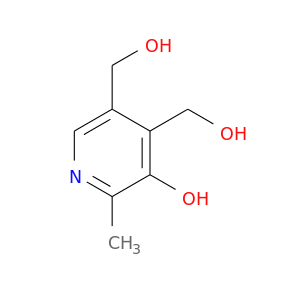 |
| DB03431 | pyridoxal (pyridoxine, vitamin B6) kinase | experimental | Adenosine-5'-Diphosphate | 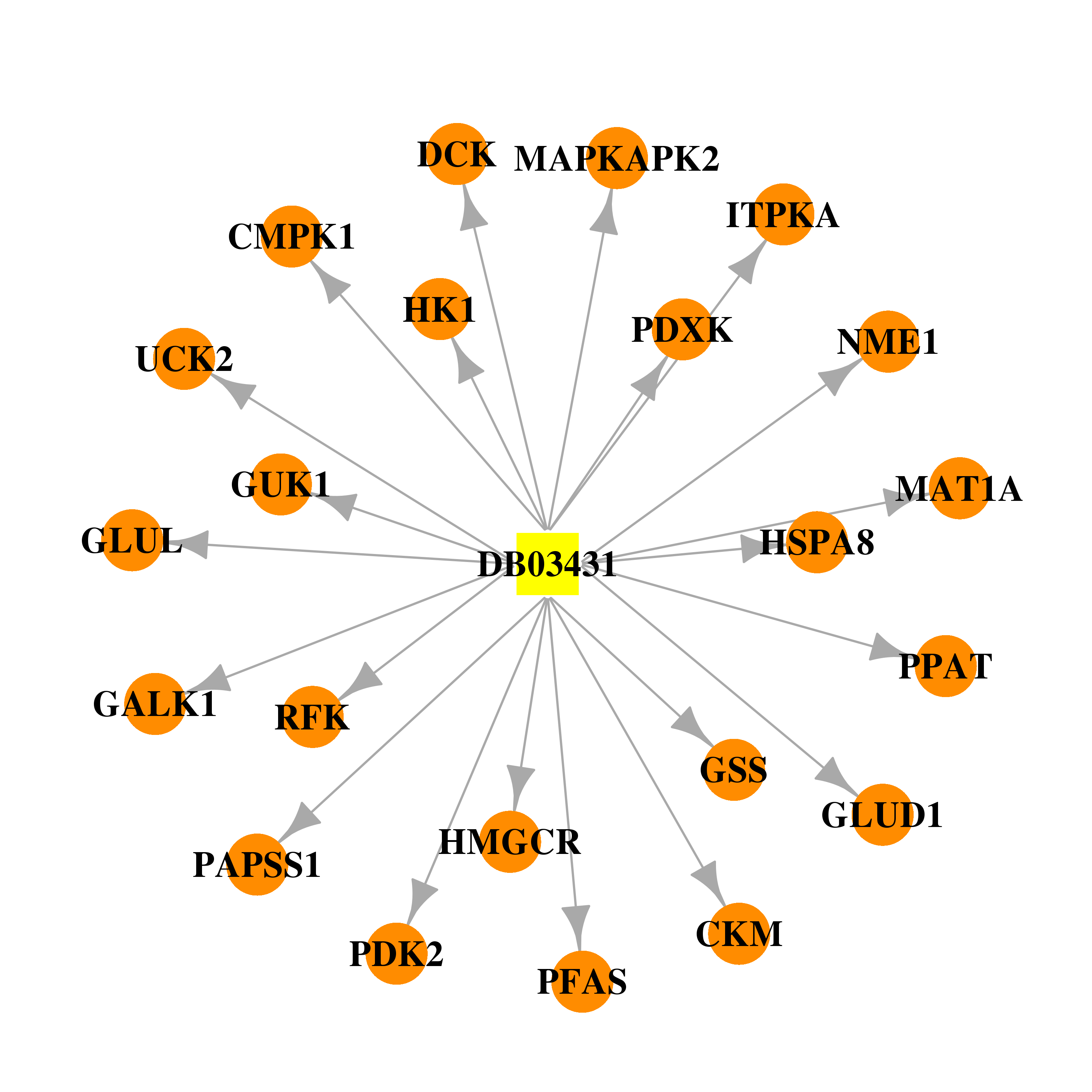 | 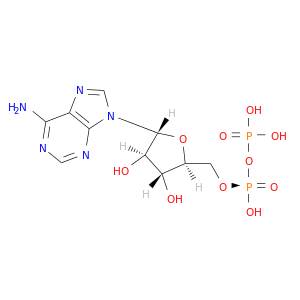 |
| DB03909 | pyridoxal (pyridoxine, vitamin B6) kinase | experimental | Adenosine-5'-[Beta, Gamma-Methylene]Triphosphate | 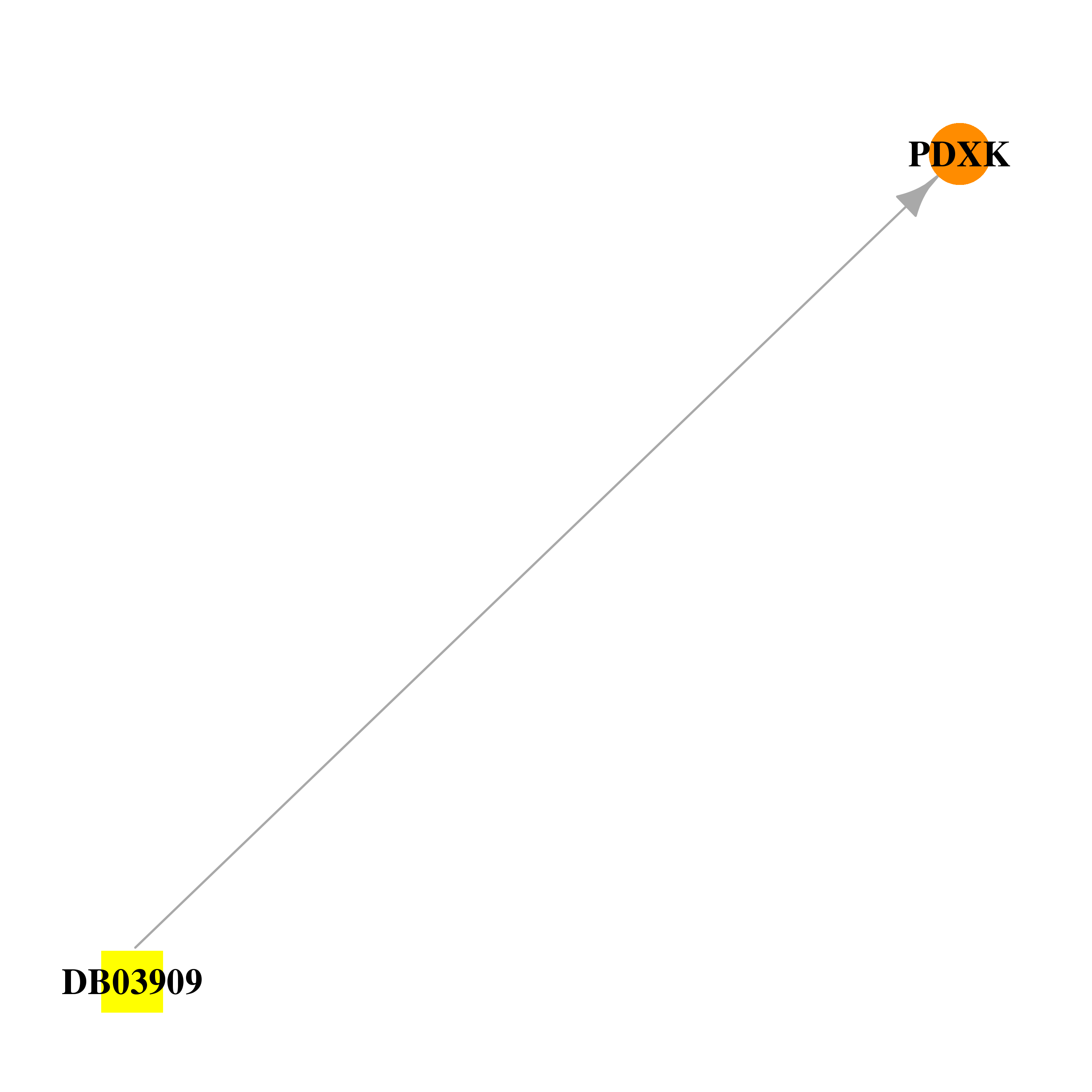 |  |
| DB04770 | pyridoxal (pyridoxine, vitamin B6) kinase | experimental | O6-(R)-ROSCOVITINE, R-2-(6-BENZYLOXY-9-ISOPROPYL-9H-PURIN-2-YLAMINO)-BUTAN-1-OL | 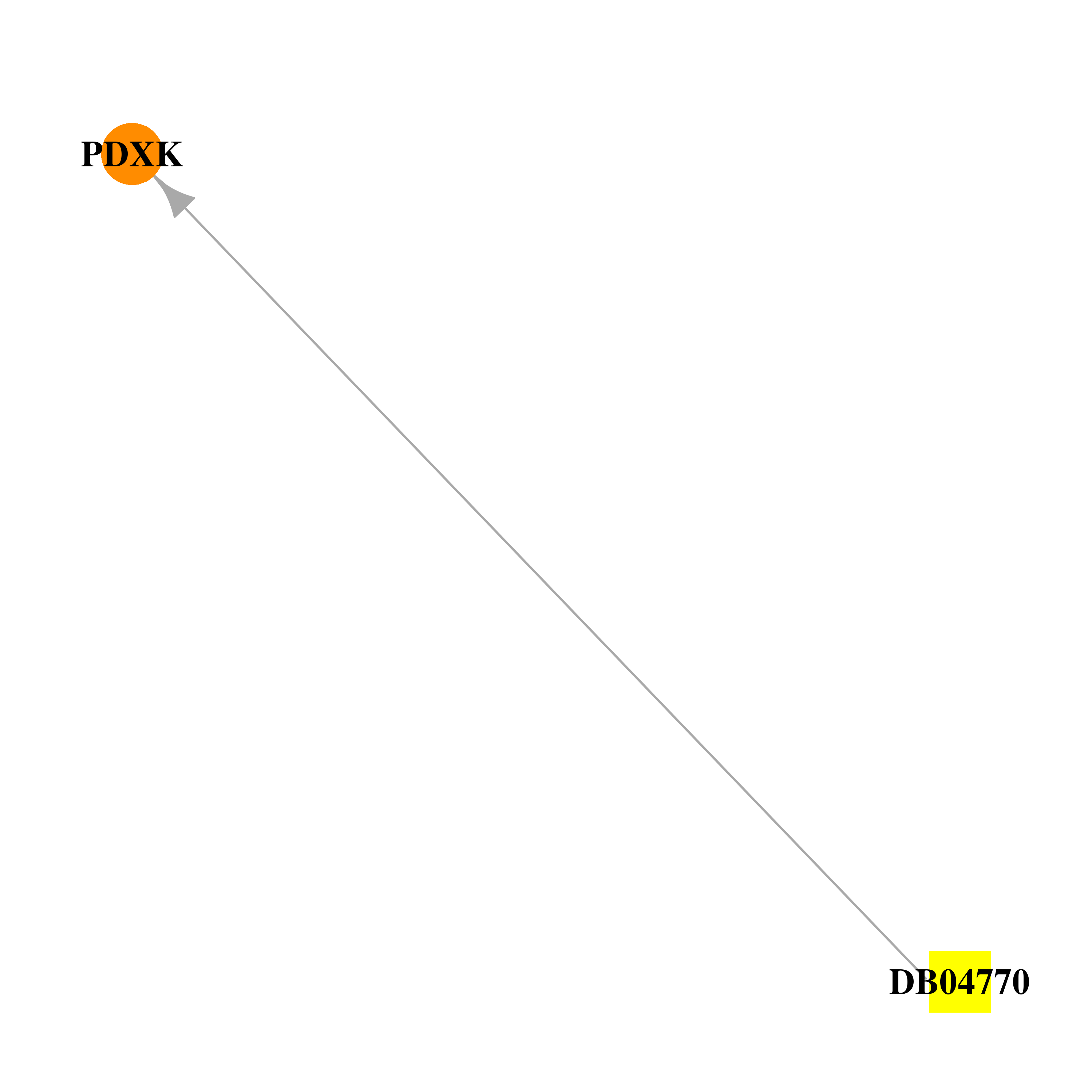 | 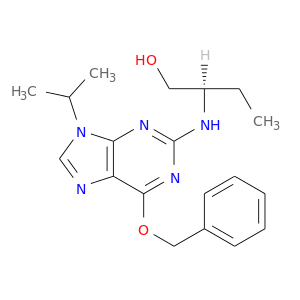 |
| DB04776 | pyridoxal (pyridoxine, vitamin B6) kinase | experimental | N6-METHYL-(R)-ROSCOVITINE, R-2-[6-(BENZYL-METHYL-AMINO)-9-ISOPROPYL-9H-PURIN-2-YLAMINO]-BUTAN-1-OL | 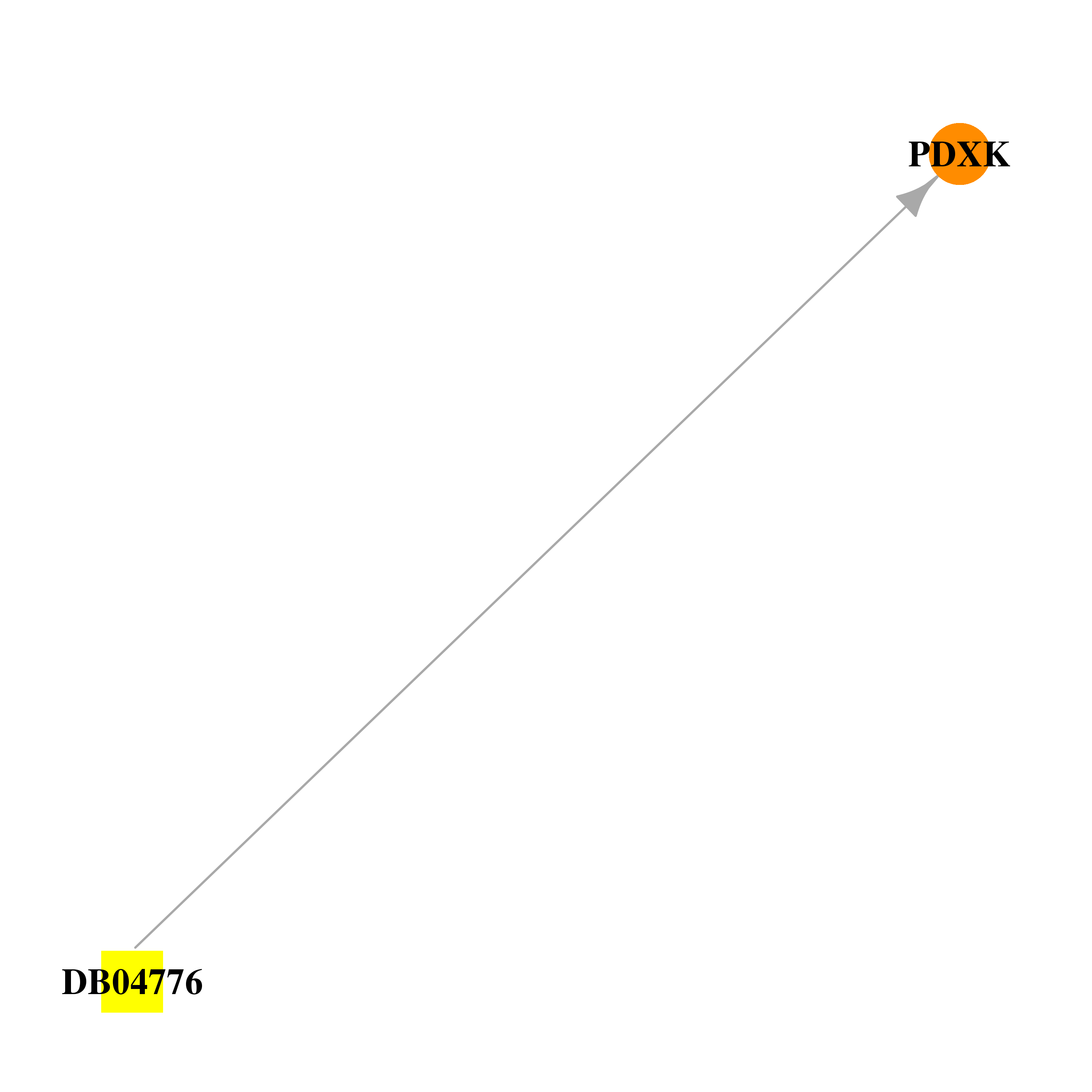 | 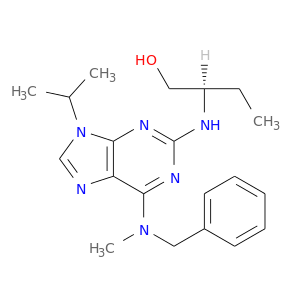 |
| Top |
| Cross referenced IDs for PDXK |
| * We obtained these cross-references from Uniprot database. It covers 150 different DBs, 18 categories. http://www.uniprot.org/help/cross_references_section |
: Open all cross reference information
|
Copyright © 2016-Present - The Univsersity of Texas Health Science Center at Houston @ |






